Sephardic people for the most part eat salty aged cheese, such as Parmesan, Kashkaval, and Kasseri and savory fresher cheeses like feta. My first encounters with sweet cheese came with cream cheese frosting on carrot cake, cheese cake, cheese Danish, and blintzes on a trip to New York during college.
A slice of cheesecake is a delightful balance of cheese with sweet including the hint of lemon and vanilla. A palate pleasing flavor, you like it the first time you taste it, no acquiring required. [1]
[1]
The Ashkenazi custom is to eat dairy on the upcoming holiday of Shavuot, June 7th 2011 and June 8th. This year I will introduce two new flavors of cheesecake in honor of the holiday. The Sephardis eat dairy as well. I remember Nona made rice Kezadas, a kind of open face cheese flavored rice filled boreka. I hope to make some next week and freeze them. Shavuot is the holiday commemoration for receiving the Ten Commandments.
Cheese cake is a great buffet fare, for parties, brunches, and dessert get togethers. It can be made up to 3 days ahead and kept for several days after in the refrigerator.
2 cups coarsely ground pecans
5 tablespoons unsalted butter
Cake:
5 room temperature 8 ounce packages of cream cheese
2 cups granulated cane sugar
1/4 cup fresh orange juice
¼ cup whipping cream
5 eggs
2 egg yolks
1 heaping tablespoon of orange zest
1 tablespoon fresh lemon juice
1 teaspoon vanilla
Topping
2 cups sour cream
½ cup brown sugar
1 teaspoon vanilla
1 teaspoon natural orange extract
Decoration:
4 blood oranges
3 cups granulated sugar
3 cups water
Melt the 5 tablespoons of butter. Pour the ground pecans into the bottom of a 10 inch spring form pan set on a baking sheet to catch any drippings in the oven. Pour the melted butter into the ground pecans. Combine the nuts and the butter with your fingers. Press the crust into the bottom of the spring form pan evenly using your finger tips. Set the pan aside while you make the cake batter.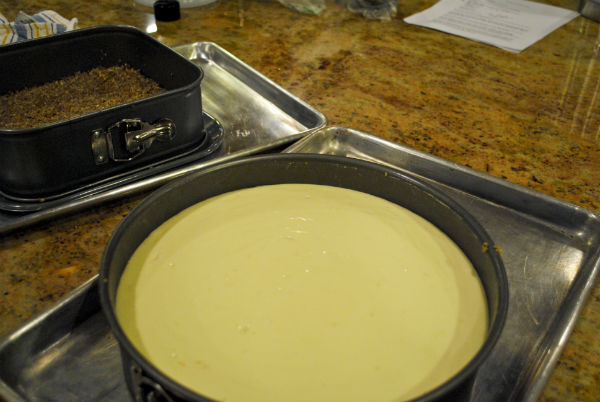 [3]
[3]
Preheat the oven to 425°. In the bowl of a stand mixer, combine the cream cheese and sugar. Beat until fluffy, and then add the orange juice, whipping cream, eggs, egg yolks, lemon juice, and vanilla. Add the orange zest. You can grate the zest off of an orange before you squeeze it for juice. Turn the mixer on slow to start and when all is incorporated, mix for a moment on medium, until fluffy.
Pour the batter into the prepared cheesecake pan. Place the pan into the oven. In 15 minutes turn the heat down to 325° and continue to bake for 45-50 minutes. Check for doneness by barely touching the center of the cheesecake in the middle, it should only give a little. The cake should rise, be poufy and golden without wiggling like liquid when done. Remove the cake from the oven and let it sit for 15 minutes. In the meantime, prepare the sour cream layer.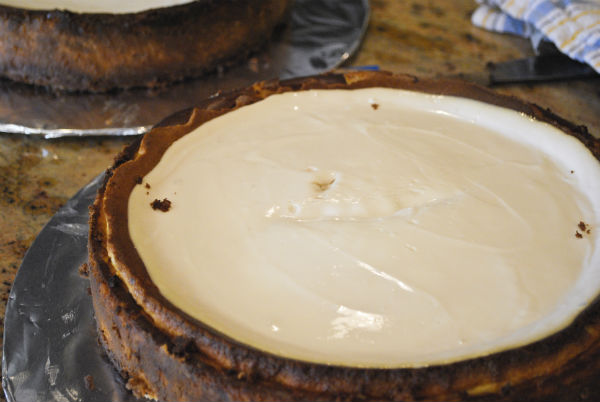 [4]
[4]
Mix the sour cream, sugar, and vanilla in a bowl and then add the orange extract. Spread the sour cream topping to within ½ inch of the boarder of the cheesecake. Many times the cake sinks in a little during the waiting period and leaves a well to spread the sour cream into. Return the cake to the oven for 5 more minutes. Remove and place aside to cool. After the cake has cooled a bit, refrigerate it until you plan to serve it in a few days.
Make the candied blood oranges ahead and refrigerate them as well. Take the blood oranges, wash and dry them and then slice them thinly across in circles. Place the oranges in a heavy saucepan with the sugar and water. Bring the oranges to a boil, turn the heat down to a very slow boil and let them simmer for a couple of hours. In that time the oranges will candy and the syrup will reduce and become delicious. Store the oranges in the refrigerator in their own syrup in a glass container with a tight lid.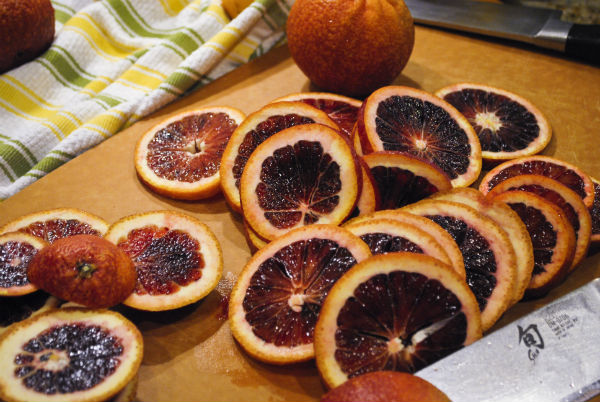 [5]
[5]
When you are ready to serve the cheesecake, un-mold the cake from the spring form pan. To release the cake from the mold, run a sharp knife around the edges to loosen the cake and then unlock the side lock of the pan. Release the walls. Using a long thin spatula, pass under the cake to release it from the bottom of the spring form pan and gently place the cheesecake on your serving platter. I always place a cardboard wrapped in aluminum foil and sometimes covered with a paper lace doily to place my cake on. It is then easily movable and ready to garnish.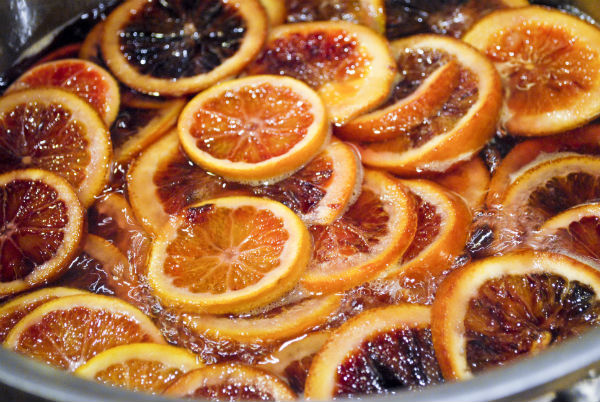 [6]
[6]
To garnish, take 10 or more of the chilled candied blood orange slices and cut them in half. Place the half rounds in a decorative pattern on the top of the cake. You may drizzle a little syrup over the cake if you wish. Slice and serve. [7]
[7]
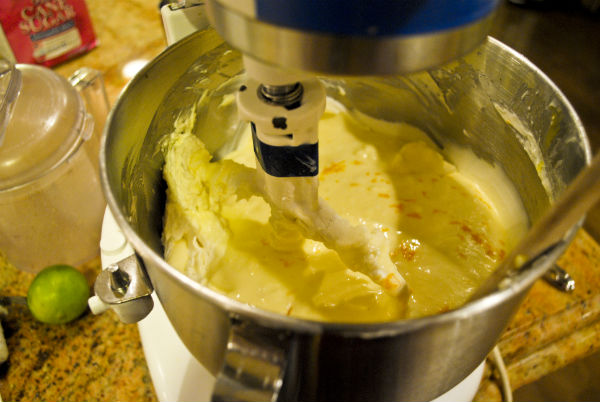
2 Comments To "Blood Orange Cheesecake"
#1 Comment By Norma On May 20, 2011 @ 6:22 PM
Hi Linda,
This cheesecake looks simply delicious. I am looking forward to seeing the recipe and pictures for the rice kezadas as well.
My daughter requested the agristada the other night. I had previously made it during Passover. When dinner was over, she said, “thanks Linda.” We also enjoyed the laffa bread as well as the angel food cake this week.
I have had much success with all your recipes. Looking forward to all the new postings.
Norma
#2 Comment By megi On May 23, 2011 @ 7:41 AM
Linda, the cheesecake looks perfect, I especially love the blood orange topping and the pecan crust!